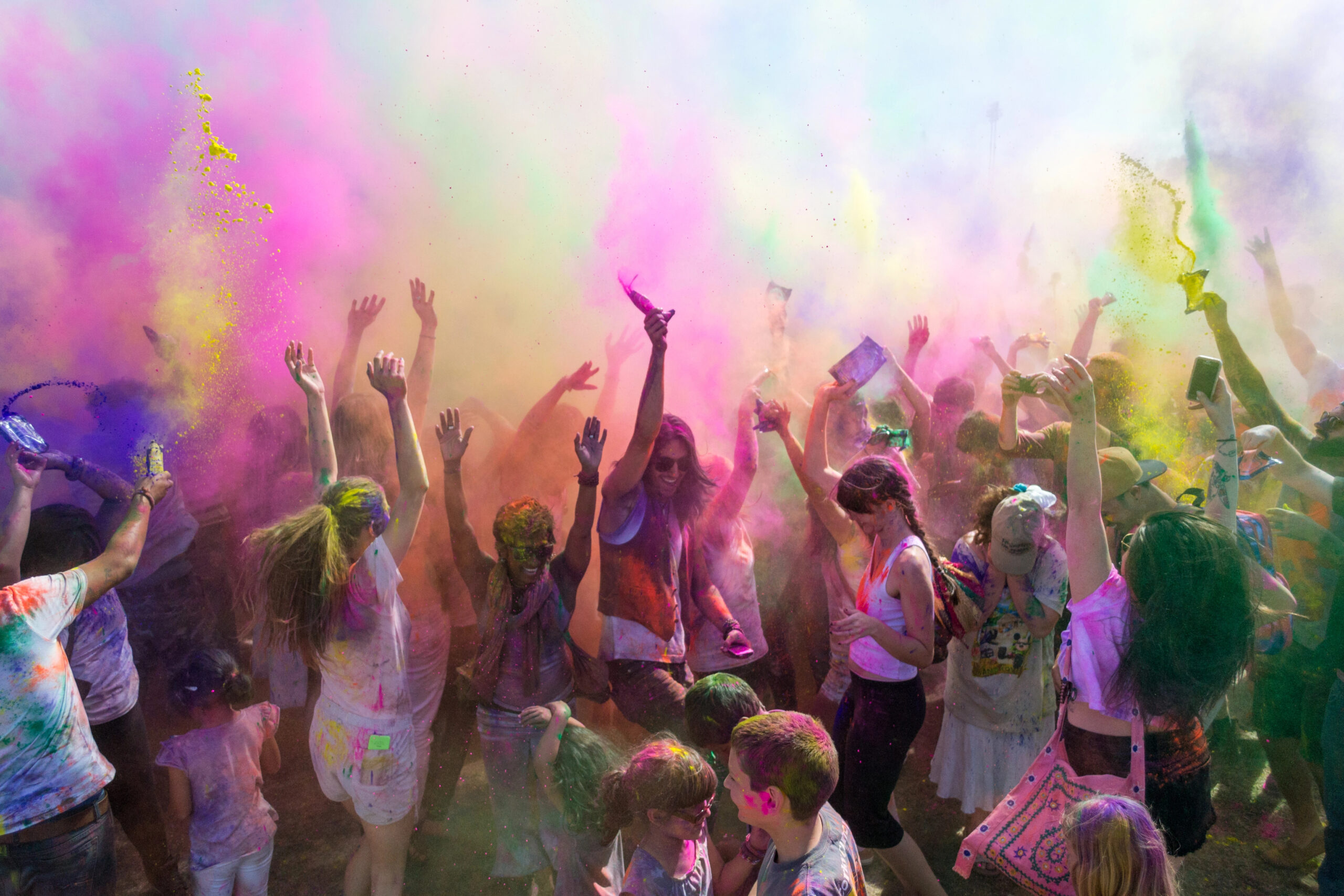Discover the colorful world of India’s Holi festival. Learn everything you need to know about how to throw yourself in the joyous spirit of one of the country’s most beloved festivals.
Holi Festival: The Color and Culture of India
What’s your favorite color? Maybe yellow? Red? Perhaps blue or purple? At the Holi festival in India, get ready to paint to town, literally! If you have never heard of the celebration of color before or looking to prove that good will always triumph over evil, you have come to the right place. We are about to taste the color of the rainbow and discover the vibrance, history, and excitement of the Holi Festival in India.
Welcome to the Holi Festival in India
As one of India’s most exuberant and beloved festivals, Holi is a time when streets come alive with laughter, music, and clouds of colorful powder. But Holi is more than just a festival of colors—it’s a celebration of spring, love, and the triumph of good over evil.
In this article, we’ll dive into the heart of Holi, exploring its traditions, customs, and unforgettable experiences that make it a must-visit celebration for travelers from around the world.
Origins & History of Holi
Holi, also known as the Festival of Colors, is an ancient Hindu celebration that dates back thousands of years. Legend has it that Holi originated from the story of Holika, a demoness who tried to burn Prahlad, a devotee of Lord Vishnu, in a fire. However, Prahlad’s devotion saved him, and Holika was burned instead. This victory of good over evil is celebrated during.
But Holi isn’t just about bonfires—it’s also about painting the town! According to another legend, Lord Krishna, a mischievous Hindu god, played pranks on the villagers by spraying them with colored water and smearing them with powders. This tradition evolved into the festivities of throwing colors, dancing, and singing that we see during Holi today.
In addition to its mythological roots, Holi also has agricultural significance, marking the arrival of spring and the harvest season. It’s a time for people to come together, forget their differences, and celebrate the renewal of life and nature. Today, Holi is one of the most celebrated festivals and most anticipated times in all if India.
Symbolism and Meaning
At its core, Holi is a celebration of renewal and rebirth. It marks the end of winter and the beginning of spring, a time when nature awakens and bursts forth in a riot of colors. Just as the earth is rejuvenated by the freshness of spring, Holi reminds us of the endless cycle of life, death, and renewal.
Colors also play a central role in Holi, symbolizing the diversity and vibrancy of life. As people smear each other with colored powders and spray water, they spread love, happiness, and positivity. It is a time to let go of inhibitions, embrace spontaneity, and revel in the joy of being alive. During Holi, old grudges are forgiven, and differences are set aside as everyone joins in the festivities with laughter and smiles.
The Festival
Now for the best part, the festival itself. From dawn until dusk, Holi lights up all of India with vibrant colors and sounds of laughter. If you have next experienced Holi before or planning to go join in on this year’s celebrations, here’s an overlook of a day in the life at Holi:
Morning: Rise and shine! Start the day with a breakfast of sweets and snacks, including treats like gujiya and puran poli. Put on old clothes that you don’t mind getting colored, as the fun is about to begin!
Late Morning: Head outside to join the festivities! Grab your colors and water guns, and get ready to paint the town red… and blue, green, yellow, and every other color of the rainbow! Take part in the playful of throwing colored powders and water at friends, family, and even strangers.
Afternoon: Work up an appetite with all that color throwing? It’s time for a break. Enjoy Holi dishes like thandai, a spiced milk drink, and more sweets and snacks.
Evening: As the day starts to wind down, gather around the Holika Dahan bonfire. Join friends and family in rituals to mark the victory of good over evil.
Night: Keep the celebrations going late into the night! Head back home or to a friend’s house for a festive dinner and exchange hugs, greetings, and blessings.
What to Know Before You Go
As you can see, Holi is definitely a festival in India that stands out among others. It’s no surprise it’s so popular and attracts thousands of visitors year after year. Besides the history and background of the festival, here is a list of things to know before you go to ensure the best experience possible at Holi:
Understand the Significance: Familiarize yourself with the significance of the Holi festival, which celebrates the victory of good over evil and the arrival of spring.
Dress Appropriately: Wear old clothes that you don’t mind getting stained with colored powders (gulal). White clothing is traditionally worn to better display the colors of the festival.
Protect Your Skin and Hair: Apply oil or moisturizer to your skin and hair before Holi to create a barrier against the colors and make them easier to wash off later.
Stay Hydrated: Carry a water bottle with you to stay hydrated throughout the day, especially if you’ll be spending time in the sun.
Prepare for Crowds: Control your patience. Expect large crowds and busy streets during Holi.
Use Safe Colors: Purchase eco-friendly and non-toxic colors to use during Holi, and avoid colors that may cause irritation or allergic reactions.
Plan Your Transportation: Arrange transportation to and from Holi celebrations in advance, as public transportation may be crowded or limited during the festival.
Pack Essentials: Bring along items such as sunscreen, sunglasses, a hat, and wet wipes to protect yourself from the sun and make clean-up easier.
If you are looking for one of the happiest celebrations on Earth, you’ve found it here at Holi in India. After reading this guide, we hope you are more equipped with knowledge and inspired than ever to explode with color on the streets of India for Holi. Remember, wear white, stay happy, and always look on the bright side!




Leave a Reply